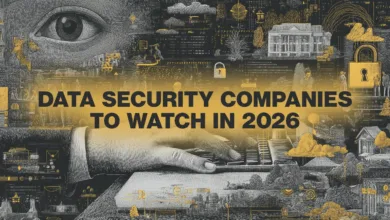2025’s Top Cyber Threats: Ransomware, Outages & AI Attacks

▼ Summary
– Ransomware, third-party disruptions, and AI-powered attacks are reshaping the 2025 cyber risk landscape, as detailed in a midyear analysis by Resilience.
– Vendor-related incidents remain a top concern, accounting for 15% of total losses in early 2025 and highlighting vulnerabilities in interconnected supply chains.
– AI is enhancing social engineering attacks, which accounted for 57% of claims and 60% of total losses, making phishing harder to detect and more widespread.
– Ransomware attacks have decreased in frequency but increased in cost, with the average claim rising 17% to $1.18 million and double extortion becoming more common.
– Most organizations hit by ransomware did not pay extortion demands, with only 14% making payments in early 2025, especially those with strong backups and recovery plans.
The digital threat environment for 2025 is dominated by three major forces: increasingly sophisticated ransomware, widespread disruptions from third-party vendors, and a sharp rise in AI-driven social engineering campaigns. A recent midyear analysis from Resilience examines real-world cyber insurance claims to identify where organizations face the greatest financial and operational risks, offering critical insights for security leaders aiming to strengthen their defenses.
Vendor-related disruptions continue to pose a serious and systemic risk, even as the proportion of losses linked to supplier outages shows a slight decline. High-impact incidents targeting companies like CDK Global and Change Healthcare illustrate how vulnerabilities within a single vendor can cascade across entire industries, affecting organizations far beyond the initial target. According to Judson Dressler, Director of the Risk Operations Center at Resilience, effective vendor risk management requires continuous monitoring rather than periodic assessments. He emphasizes translating threat intelligence into financial projections to evaluate potential business impact. Dressler also recommends strategic investments such as behavioral analysis for insider threats, AI-powered social engineering detection, and Zero Trust mandates throughout the supply chain.
Artificial intelligence is reshaping social engineering, making phishing and impersonation attacks more convincing and difficult to detect. These tactics now account for more than half of all cyber claims and losses in early 2025. AI-generated messages are spreading across multiple channels, email, browsers, and even voice calls, enabling attackers to bypass multi-factor authentication and deceive helpdesk personnel. While AI amplifies these threats, defense still hinges on reinforcing foundational security practices. Regular red-team exercises can uncover gaps in how employees recognize and respond to AI-augmented fraud. Building behavioral baselines into monitoring systems helps reduce false positives, and implementing extra verification steps for high-value assets can prevent a single breach from causing organization-wide damage.
Ransomware remains the costliest form of cyber incident, with average losses climbing to $1.18 million per event, a 17% increase over the previous year. Although the number of ransomware claims dropped significantly, the attacks that do occur are more targeted and destructive. Double extortion tactics, involving both system encryption and data theft, are now commonplace. A notable trend is the declining rate of ransom payments: only 14% of affected organizations paid extortion demands in early 2025, down from 22% the year before. Companies with robust, tested backup and recovery systems demonstrated significantly greater resilience, often avoiding payment altogether. This underscores the importance of proactive incident response planning and reliable data restoration capabilities.
(Source: HelpNet Security)

